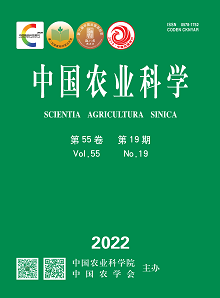【Objective】 The aim of this study was to identify all members of tomato DIR gene family, and to predict and analyze their gene structures, physicochemical properties of proteins, phylogenetic relationship, chromosome location, collinearity analysis, promoter elements, expression pattern, prediction of interacting transcription factors and endogenous competitive RNA, so as to provide a reference for exploring the role of DIR in tomato growth and development and response to environmental stresses. 【Method】 The family members of DIR were identified in the whole genome level by bioinformatics methods. The chromosome location, conserved motif, cis-acting element, transcription factors, miRNA and circRNA were analyzed with Phytozome, MEME, PlantCARE, opsRNATarget and plantcircnet, respectively. Chromosome location map, evolutionary tree, relationship map between DIR and transcription factors, ceRNA network, and etc., were drown using Maptea, TBtools, Cytoscape and Omicshare. The expression level of DIR under environmental stresses was studied by NCBI gene database, transcriptome sequencing and qRT-PCR. 【Result】 27 members of DIR family were identified from the whole genome of the tomato, which were named SlDIR1-SlDIR27, and DIR genes of the tomato were located on 12 chromosomes, most of which were located at the end of chromosomes. The gene structures, motifs and domains were relatively conservative, and the classical structure of one exon existed in 22 SlDIR genes. The collinear relationship of DIR genes between tomato and Arabidopsis was much higher than that of rice and soybean. Based on the phylogenetic relationship, 27 DIR members of tomato were divided into three different subfamilies. The tissue specific expression analysis revealed that transcription levels of DIR members of tomato were higher in root. In addition, the promoter region of these genes contained multiple cis-acting elements related to abiotic stress, including drought, low temperature, and hormone induction, such as MeJA, ABA and SA. Hormone, growth and abiotic stress related to transcription factors (ERF, E2F / DP and MYB) were also predicted. Combined with our transcriptome data of pesticide stress and published transcriptome data analysis, the expression level of 5, 10, 10 and 13 SlDIR genes was significantly up-regulated after pesticide, drought, salt and cold stress. And SlDIR23 was induced by all the four stresses, while SlDIR8, SlDIR13 and SlDIR20 were specifically responded to the induction of cold stress, and SlDIR17 specifically responded to salt stress. Finally, the ceRNA regulation of tomato DIR showed that miR-156 might interacted with the target gene SlDIR8 to regulate tomato against stresses. 【Conclusion】 A total of 27 DIR gene family members were identified from the tomato genome and unevenly distributed on 12 chromosomes, with high expression in roots. The expression of SlDIR1, SlDIR13, SlDIR14 and other genes was included by MeJA, ABA and SA and other hormone response elements, among which SlDIR6 only contained MeJA element, and SlDIR27 only contained SA response element. In addition, SlDIR2, SlDIR14, SlDIR23 and other genes were participated in drought, salt, low temperature and other stresses. Especially for SlDIR23, it could be activated under different stress treatments. In addition, DIR genes interacted with transcription factors and noncoding RNA to regulate the responses of tomato plants under stresses.









